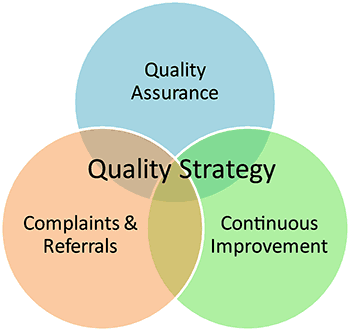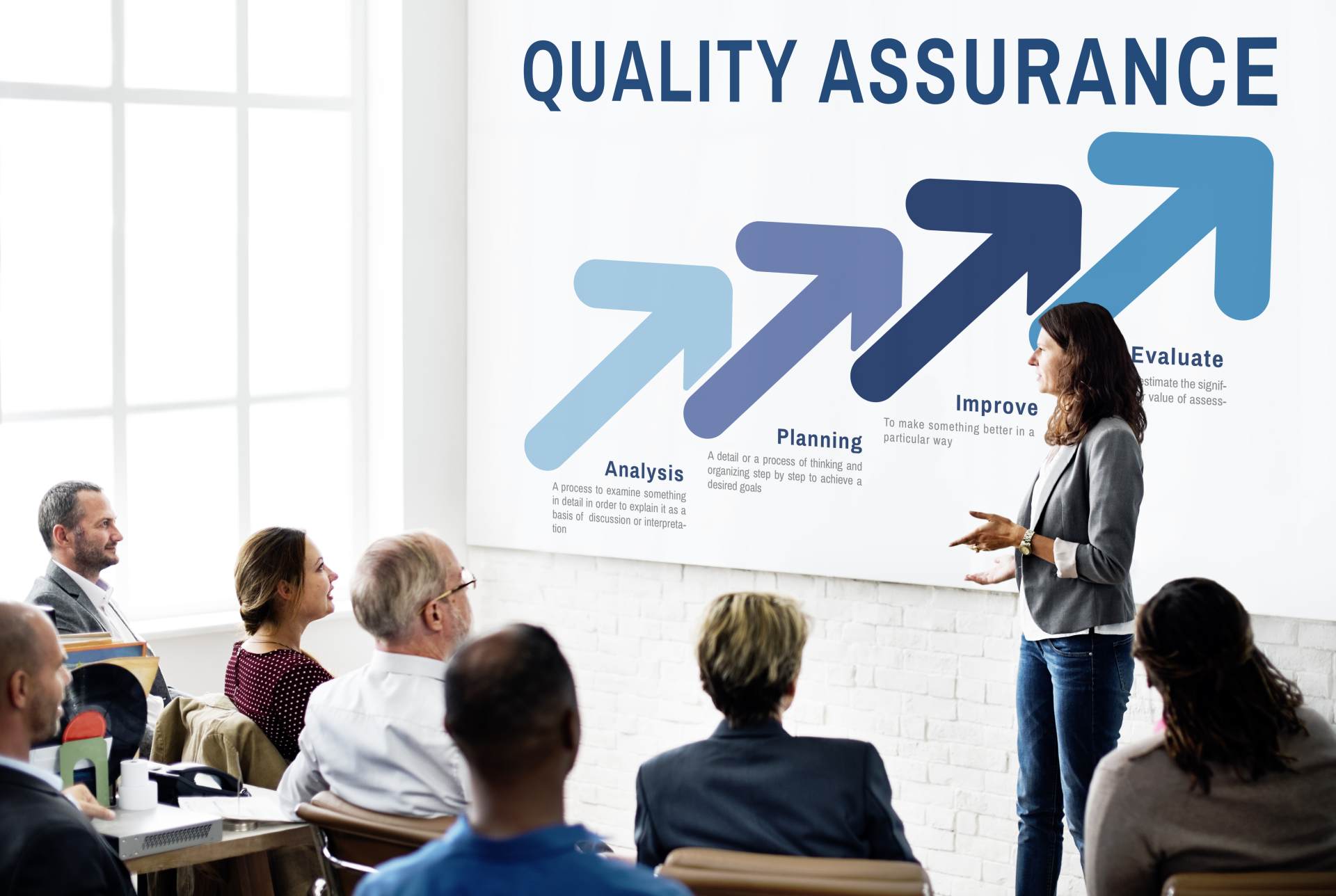Whether your business delivers products or services, ensuring a consistent, high-quality output is essential. It’s the foundation of customer satisfaction, loyalty, and ultimately, increased profits. Simply put, quality assurance is the end-to-end process of monitoring and evaluating the performance of your offerings to meet expected standards.
Quality assurance is the end-to-end process of monitoring and evaluating the performance of products or services.
There are several quality assurance methods available, but in many organizations, quality assurance still happens more by chance than through strategic planning. If your business has been operating without a defined QA framework, now is the time to get more structured and deliberate.
The good news? Your company intranet can be a powerful tool to support and implement effective quality assurance practices. In this article, we’ll explore common QA methods and how your intranet can enhance each one.
What Is Quality Assurance?
Let’s clarify what we mean by quality assurance. According to the American Society for Quality:
The planned and systematic activities implemented in a quality system so that quality requirements for a product or service will be fulfilled.
In simple terms, quality assurance (QA) is a proactive and process-oriented approach focused on the development and delivery of goods or services. It’s about embedding quality throughout the process, not just testing at the end.
Why Is Quality Assurance Important?
Quality assurance is crucial for multiple reasons:
- Meeting customer expectations consistently
- Protecting and enhancing brand reputation
- Reducing operational and production costs
Effective QA helps you minimize returns, rework, or refunds due to substandard output. It also enables you to command higher prices due to perceived value and reliability. More importantly, in today’s digital world, a single bad review can go viral in minutes. Without proper quality assurance, the risk of a public reputation crisis or even a costly product recall increases significantly.
Implementing quality assurance methods will help you prevent these issues. With a cycle of continuous assessment, feedback, and improvement, you can consistently deliver a product or service that exceeds expectations.
Quality Assurance vs. Quality Control: Key Differences
Although the terms are often used interchangeably, quality assurance (QA) and quality control (QC) are not the same.
QA is proactive—it’s integrated during the development process to ensure that workflows and production meet predefined quality standards. In contrast, QC is reactive. It occurs after a product or service has been delivered, assessing whether it meets the required specifications and performance criteria.
Both are critical to business success. However, while QC helps detect problems, QA enables you to prevent them, saving time, resources, and your brand reputation.
Top Quality Assurance Methods You Should Know
Search online for “quality assurance methods” and you’ll discover a wide range of frameworks and tools. Here are some of the most commonly adopted QA methods in modern businesses:
- Benchmarking
- Business process re-engineering
- Kaizen (Continuous Improvement)
- Operations analysis
- ISO accreditation
- Ishikawa diagrams (Cause-and-effect analysis)
- Product specifications
- Standard operating procedures (SOPs)
- Cost-benefit analysis
- Statistical sampling
- Quality management methodologies like Six Sigma and Lean Manufacturing
Chances are, your organization is already using one or more of these methods—even if informally. While some approaches are more complex and data-driven than others, all of them benefit from streamlined workflows. That’s where your intranet software comes in. With centralized access, intuitive tools, and real-time updates, the company intranet makes implementing QA methods simpler and more effective.
Customer Feedback: The Cornerstone of QA
Every effective QA initiative starts with the customer. Ultimately, your product or service must meet or exceed the end-user’s expectations for quality. That’s why incorporating customer involvement into your QA process is non-negotiable.
One smart way to do this is by using an integrated customer portal within your company intranet. This secure online space allows your customers to:
- Log issues, defects, or service complaints
- Provide feedback and participate in surveys
- Engage in discussions about product quality
- Track the progress of submitted concerns
The portal also empowers your organization to share updates about product improvements or innovations that have resulted from user feedback, creating a transparent, two-way relationship. Over time, this feedback loop fosters stronger customer trust while offering valuable insights for your internal QA processes.
Process Documentation: The Backbone of QA
Every quality assurance system depends on well-documented processes and detailed specifications. Let’s take a simple example: suppose you’re in the cookie business. After conducting customer research, you determine the ideal cookie: it should be a specific size, soft in texture, and filled with chocolate chips. To consistently reproduce this product, you need a well-defined recipe and clear production specifications, down to the last detail.
Without standardized documentation, every batch risks being different. That’s why process documentation is vital: it ensures everyone follows the same steps and produces a uniform result.
And forget outdated, paper-based SOPs. With your intranet platform, documenting processes becomes seamless. Your QA documentation can be stored, accessed, and updated digitally, ensuring employees always refer to the latest procedures. As new tools or workflows are introduced, updates can be deployed across the entire organization instantly. This not only enhances operational consistency—it also supports quick responses when errors or inefficiencies are identified.
Digital Process Checklists For Quality Assurance
One of the most common and effective quality assurance tools in modern businesses are process checklists. These tools ensure that every essential step in the manufacturing workflow or service delivery process is completed without error or omission, leading to consistent and reliable results.
Rather than relying on inefficient paper-based systems that are prone to mistakes, organizations can streamline operations with an online checklist builder using their company intranet. Leveraging a form builder or an embedded Google Form allows for drag-and-drop customization, integrated workflows, conditional rules, automated email alerts, and real-time submission tracking. Especially for teams operating across multiple locations or off-site environments, digital checklists offer the added advantage of mobile access via smartphones and tablets.
With intranet-enabled checklists, management gains full visibility into operational processes. Any delays or performance issues can be immediately identified and resolved, leading to improved productivity and better compliance with quality standards.
Empowering Teams With Quality Assurance Training
A critical pillar of a successful quality assurance program is comprehensive employee training and development. Since it’s your staff who are directly responsible for implementing standards and protocols, proper understanding and consistent performance are essential to maintaining quality across all stages of your workflow.
The company intranet is an ideal platform for delivering scalable, cloud-based quality training resources. Whether it’s onboarding new employees or providing ongoing refresher courses for existing staff, organizations can offer training through videos, tutorials, interactive webinars, wikis, or downloadable guides. For those who prefer print-style formats, the intranet also supports checklists, surveys, and structured learning paths.
Since the platform is cloud-based, training modules can be accessed anytime, from anywhere. Employees can learn at their own pace, and progress is automatically tracked and reported to management for compliance monitoring. This not only supports continuous improvement but also ensures no one is left behind in the pursuit of excellence.
Continuous Improvement Through Regular Process Reviews
Regular process reviews are essential for sustaining and improving quality assurance. As internal operations evolve and external environments shift—through new technologies, team changes, or market pressures—periodic assessments ensure your standards remain robust and competitive.
Managers, either individually or collaboratively with teams, should routinely evaluate production and service workflows. Benchmarking against industry best practices is another powerful tool to stay competitive and optimize internal standards.
The intranet offers a central hub for managing this review process. You can create secure, role-based project workspaces where stakeholders collaborate on review strategies, exchange feedback, and update documentation in real time using embedded tools like G Suite. All updates are automatically saved, ensuring the most current version is accessible to all contributors.
Once reviews are finalized, use the intranet’s newsfeed or bulletin feature to communicate results and share the quality improvement plan with your wider team. This fosters transparency and ensures alignment across departments.
Efficient Management Of Quality Assurance Data
All quality assurance processes generate a wealth of critical data, ranging from detailed production specifications to standard operating procedures and benchmarking reports. Efficiently organizing and managing this data is key to supporting long-term quality and compliance.
With the intranet’s built-in document management system (DMS), staff can access a familiar file-explorer interface to store, organize, and retrieve files within seconds. Unlimited storage capacity, advanced search filters, and structured folders mean no time is wasted hunting for important information.
All data is hosted in the cloud, providing secure 24/7 access for employees in satellite or remote locations. With a smart content management system, outdated versions are automatically archived or removed, so users always reference the latest documentation, reducing errors and supporting ISO and regulatory compliance.
Learn more about our cloud-based content management system and how it simplifies quality assurance data handling.
Streamline Your Quality Assurance Strategy With An Intranet
Maintaining a high level of product or service quality is not just a business necessity—it’s a competitive advantage. In today’s fast-paced market, a reputation for reliability and quality can be the difference between leading the industry or falling behind.
Implementing a robust quality assurance system doesn’t have to be complicated. With the right intranet solution, you can automate workflows, centralize documentation, train your staff efficiently, and manage compliance—all in one place. This makes the entire process more transparent, streamlined, and scalable.
Ready to transform your approach to quality assurance? Discover how MyHub’s easy-to-deploy cloud intranet templates can power your operational excellence. Book a free demo or start a 14-day no-obligation trial today. Contact us to learn more!
FAQ
What is quality assurance in business?
Quality assurance is a process-oriented approach to ensuring that products or services meet predefined quality standards throughout their development and delivery.
How does an intranet help with quality assurance?
An intranet centralizes documentation, streamlines workflows, supports training, and enables real-time collaboration, making QA practices more efficient and consistent.
What’s the difference between QA and QC?
Quality assurance (QA) is proactive and focuses on preventing errors during development, while quality control (QC) is reactive and involves identifying defects after production.



